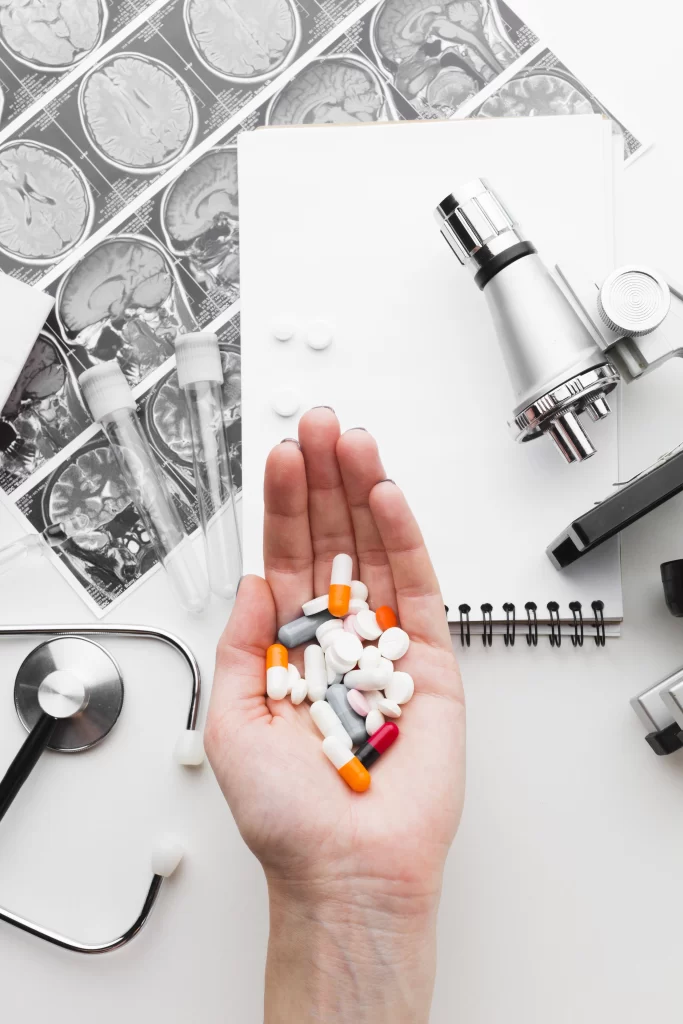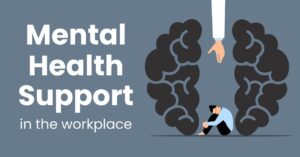Fluoxetine
The U.S. Food and Drug Administration (FDA) authorized (fluoxetine) for the treatment of serious depression, premenstrual dysphoric disorder (PMDD), bulimia nervosa (a illness characterized by binge eating and vomiting), and obsessive-compulsive disorder (OCD). In research investigations, the administration of fluoxetine to minors and Adolescents (ages 7–17) have been proven to be a safe and reliable treatment for major depressive disorder and OCD. The FDA recently authorized the use of fluoxetine in this population to treat serious depression and OCD. A medicine is said to be used for its labeled use when it is taken for the prescribed purposes. In actual practice, however, doctors frequently prescribe drugs for unlabeled (or “off-label”) applications if the safety and effectiveness of the therapies are supported by published clinical studies, case reports, or their own clinical experiences.
Other mental conditions that can be treated with Fluoxetine include posttraumatic stress disorder, social anxiety disorder, panic disorder, and generalized anxiety disorder.
The first selective serotonin reuptake inhibitor (SSRI) for therapy to be licensed by the FDA was Fluoxetine of PMDD. Before Periods women have particular symptoms during her menstrual cycle such as mood swings, irritation, rage, and depression. Particularly for PMDD, fluoxetine is one of the best choices. Fluoxetine is a medicine that targets serotonin specifically and inhibits its reuptake. serotonin levels in the brain rise as a result of its reintroduction into brain cells. Abnormally decreased serotonin levels have been linked to depression and other mental illnesses. This anomaly might thus result in modifications to impacted brain regions, leading to psychological symptoms as anxiety or despair. Fluoxetine and other SSRIs are thought to work by raising serotonin levels, which may aid in the restoration of those parts of the brain to its regular state of operation.
What is the recommended dose of Fluoxetine
Fluoxetine for depression is often started at a beginning dose of 20 mg (a pill or capsule), once daily in the morning. It is advised to start treating young, underweight youngsters with 10 mg per day. In the event that no improvement is observed after three to four weeks, the dosage may be raised by 10 mg increments up to a daily maximum of 60 mg. the dose may be changed to 90 mg of the delayed release Fluoxetine Weekly if the patient’s symptoms are stable at 20 mg/day, this would have a similar therapeutic effect. A reduced first dose can be necessary for elderly patients and those with serious or long-term medical issues. Fluoxetine doses that are greater are typically needed to address other mental conditions.
adults may need to take 80–100 mg /day for OCD treatment, but children and teenagers may just need to take 20–60 mg per day. Fluoxetine is also available in liquid for people who are unable to swallow a pill or capsule. It might take up to 2-4 weeks for the majority of people to feel the full benefits of the medicine. The length of a person’s pharmaceutical therapy is determined by their family history and own psychiatric history. For example, those with two or more prior bouts of severe depressive illness will require a lengthier course of drug therapy. Six months following therapy for depression, the drug may be reduced for the majority of patients. A tiny portion of patients, nonetheless, will experience depression symptoms even after their antidepressant dosage is lowered or stopped. These people could gain from carrying on with taking Fluoxetine for at least a year.
What are the common side effects of Fluoxetine
Fluoxetine side effects that are most frequently mentioned include jitteriness, nausea, sleeplessness, and anxiousness. Those using Fluoxetine frequently have sexual problems. Men’s delayed ejaculation and women’s delayed or absent orgasm were the most commonly reported sexual adverse effects. Certain individuals could encounter reduced sexual drive or absence of interest. occasionally, people using Fluoxetine report experiencing headaches, drowsiness, changes in appetite, increased perspiration, stomach cramps, diarrhea, and constipation. Patients should talk to their doctor about these side effects, particularly if they are still bothering them. 2-4 weeks following the initiation of the treatment. In the event that a rash or other serious symptoms appear so, patients should call their doctor right once.
What are the precautions taken while using Fluoxetine
Some people may become sleepy after using Fluoxetine. Until they are convinced that the drug is not impairing their attention or coordination, patients should refrain from using machinery or driving. Fluoxetine shouldn’t be used by anyone who has a known allergy to the medication or who has had a serious response to it. Major depressive disorder may often be effectively treated with medication, psychotherapy or both.
When treating moderate to severe depression, the combination of psychotherapy and antidepressants is particularly successful. While treatment addresses potential underlying issues, increases coping mechanisms, and enhances thought and behavior patterns, the drugs help with mood, sleep, energy, and hunger. majority of those who take antidepressants claim feeling better overall. The majority of people do not notice noticeable advantages from their antidepressants until after 3 to 4 weeks, and it can occasionally take up to 8 weeks for the medicine to have its full effects. minority of people may notice some improvement by the end of the first week. although, it’s imperative that patients take their antidepressants for the whole recommended amount of time and that they don’t give up and stop taking them too soon once they don’t start feeling better right. Antidepressants have been shown in short term trials to raise the likelihood of suicide thoughts and actions in children and adolescents with major depressive disorder and other mental diseases. When beginning antidepressant therapy in children and adolescents, the FDA mandates that the prescriber disclose this risk to the patient. The FDA found that there is an age-related risk of suicide thoughts and actions when using antidepressants.
This occurrence is more likely to happen early in the course of therapy and is more common in younger populations. Antidepressant use did not seem to be associated with a higher incidence of suicidality in people over the age of 24, as compared to placebo use. The results demonstrated that antidepressants protected against suicide thoughts and actions in people over the age of 65. there is a decrease in suicide rates in communities where majority of the population uses antidepressants. Suicide risk is a part of depression and may not go away until the patient responds to therapy. particularly a child or teenager, should be continuously monitored for worsening indications of depression after beginning or altering antidepressant medication.
If you have suicidal thoughts, you should always tell your doctor or a family member. Notify your family doctor or psychiatrist if you feel like you can’t manage suicide thoughts or desires, or if your depression symptoms get worse. Don’t stop taking Fluoxetine suddenly. It’s important to reduce your dosage gradually to avoid the symptoms of abrupt withdrawal.
- If you forget to take a dosage, make sure to catch up by taking it two to three hours later than usual. If the next planned dosage is approaching, skip the missed one and go on with your usual dosing regimen.
- Avoid taking two doses at once.
- You can take Fluoxetine with or without meals.
- Keep the medication out of direct sunlight and dampness in the light-resistant container that came with it. Your drug may break down more quickly in hot and humid environments, losing its therapeutic benefits.
- Make sure kids can’t get to your medicine.
What is the effect of Fluoxetine on pregnancy and lactation
Fluoxetine is pregnancy category C. there haven’t been any studies done on women to evaluate Fluoxetine’s safety during pregnancy. It is uncertain how the drug will affect a pregnant woman’s growing fetus. although, infants exposed to antidepressants such SSRIs late in the third trimester caused issues that necessitated lengthy hospital stays, ventilator assistance, and tube feeding. Pregnant or potentially pregnant women should talk about this with their medical professional. When they stop taking their antidepressants some women may have a relapse of depression. it can be essential to resume the medicine or look for a different kind of drug or medical care. Fluoxetine should not be given to nursing moms since tiny levels will enter breast milk and be consumed by the infant. Breastfeeding should not begin or should cease if quitting the medication is not an option.
What are the possible drug interactions with Fluoxetine
Because Fluoxetine inhibits other drugs’ liver metabolism, it may raise the levels of other medications. Higher levels of the inhibited drug may arise from this interaction, raising the risk of toxicity.
Bleeding may occur as a result of Fluoxetine’s increased levels of Coumadin and its anticoagulant properties. Compared to other SSRIs, this interaction is less likely to occur. when beginning any SSRI, thorough monitoring is necessary when on Coumadin medication. TCA levels and the amount of Fluoxetine may both rise toxicity-related potential.
Fluoxetine may increase the levels of diazepam and drugs similar to diazepam, intensifying drowsiness and impairing coordination. Fluoxetine may increase the risk of toxicity by raising the levels of anticonvulsants including phenytoin, carbamazepine, and divalproex sodium. Antidepressants Antipsychotic drugs such as haloperidol, clozapine, thioridazine, and risperidone may have increased levels due to Fluoxetine, potentially leading to an increase in negative effects.
When used with fluoxetine, other drugs that increase serotonin, such as herbal supplements like St. John’s wort may cause an excess of that neurotransmitter and cause serotonin syndrome which is a fatal condition. Serotonin syndrome’s initial symptoms include tremors, flushing, restlessness, and confusion and uncontrollably jerking muscles. If the drugs are not discontinued, the patient may experience further potentially fatal side effects such as muscular weakness, a high fever, breathing issues, blood clotting issues, and red blood cell decomposition, which might result in abrupt renal failure. Therefore, those on fluoxetine should be aware of the potential symptoms of serotonin syndrome, which call for stopping the serotonin-boosting drugs and seeking quick medical assistance.
Monoamine oxidase inhibitors (MAOIs), a class of antidepressants, should not be used with fluoxetine, as a result of the possibility of a toxic response with a spike in body temperature, a rise in blood pressure, and intense excitement and agitation. It is recommended that patients contact with their doctor or pharmacist prior to starting any new medicine, including over-the-counter drugs and herbal supplements Using fluoxetine. Alcohol should be avoided or used in moderation by patients on fluoxetine since the combination may make depression worse.
What happens when you take an overdose of Fluoxetine
Fluoxetine, like other SSRIs, is far less dangerous to overdose on than some of the more recent antidepressants and the older TCAs. Fluoxetine has a substantially longer half-life than the other SSRIs, which means that it takes the body a lot longer to get rid of Fluoxetine. There have been reports of Fluoxetine overdose deaths. Typically, Fluoxetine was used alongside other drugs in situations when the results were deadly. A Fluoxetine overdose is most frequently accompanied by sleepiness, disorientation, nausea, vomiting, an accelerated heartbeat, and seizures.
Treating any suspected overdose as an emergency is imperative. The individual has to be brought to the emergency space for care and observation. It is advisable to bring the prescription bottle of medicine (as well as any additional medication that may have been taken in excess) since the information on the label can be useful in helping the treating physician figure out how many tablets the patient has taken.




